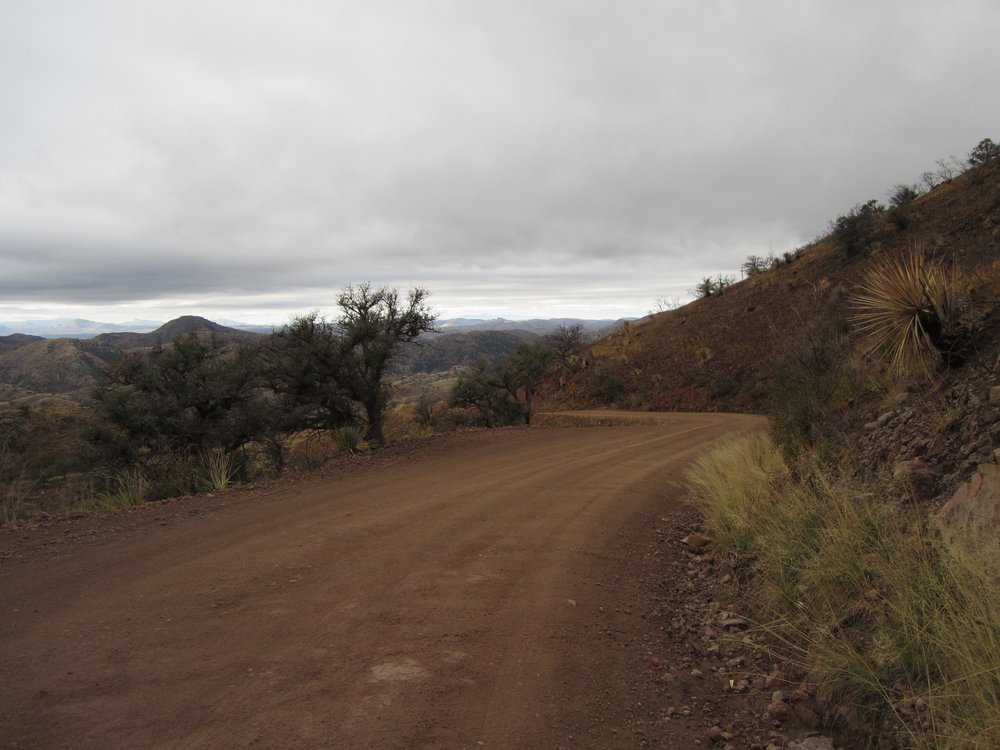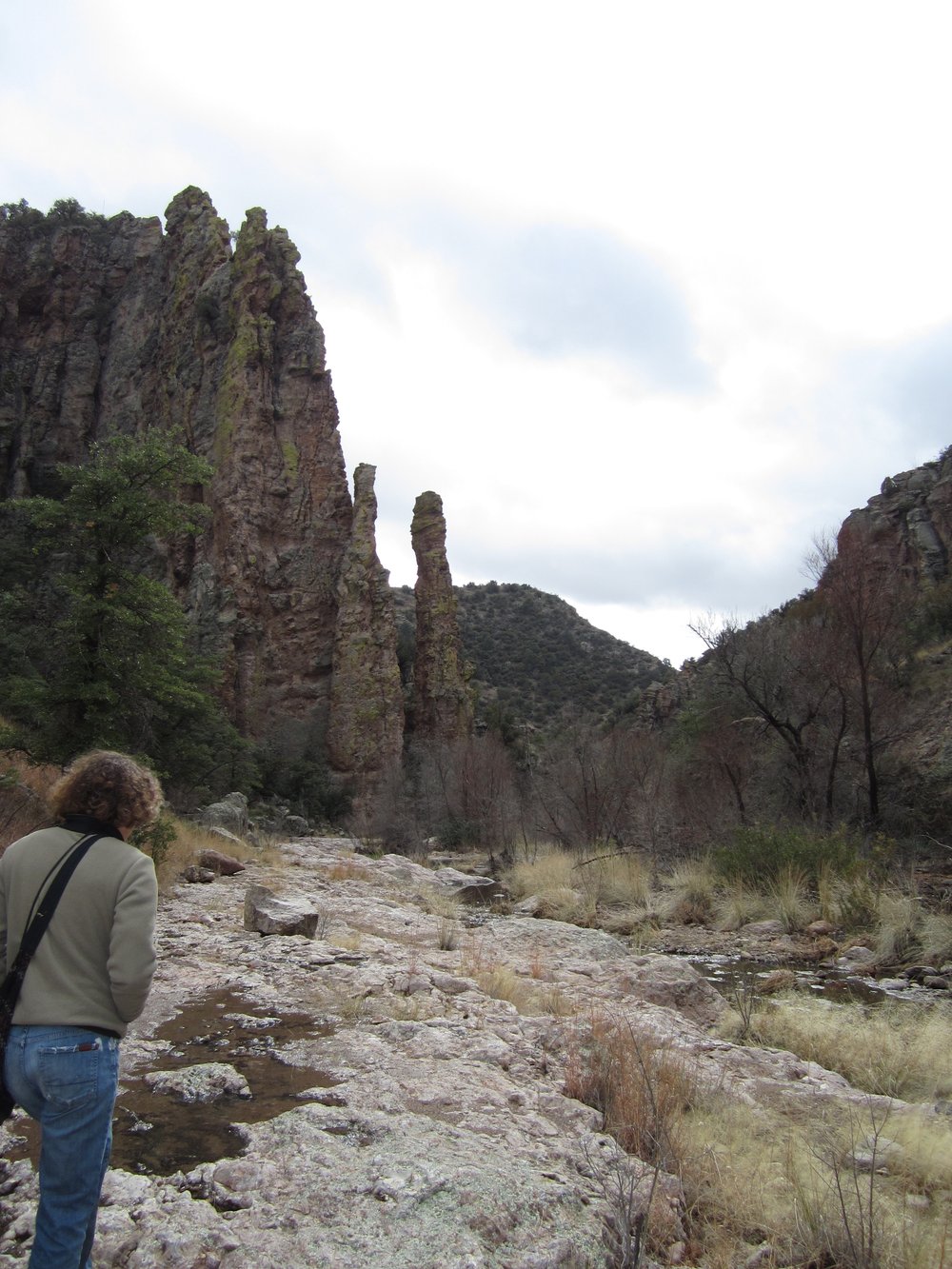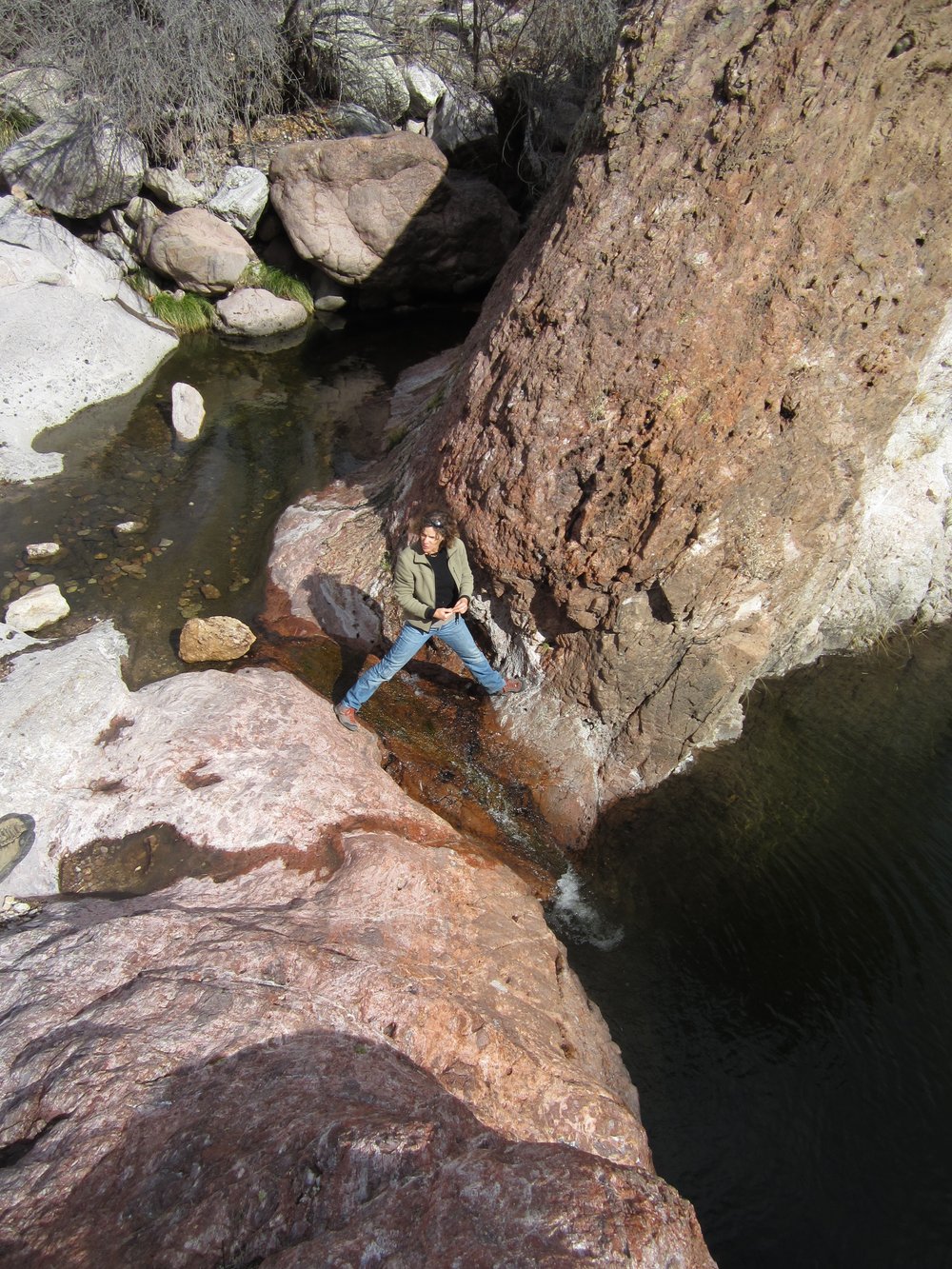
So of course I want to go. It’s my third day in Tucson and I had spent the day before in Catalina State Park, a place I hiked regularly when I lived in Tucson and a place that is far from remote or rugged. Families with children crawled their way up the wide sandy paths, and played by the stream that trickles through the valley. I had found lots of wonderful, new for me birds there: the Green-Tailed Towhee, the Pyrrhuloxia (known to locals as a Pyro), and an unidentifiable Hummingbird perched atop an ocotillo. I now wanted away from the crowds. Sycamore would be an adventure.

The turn off of Route 19, which flies south from Tucson into Mexico, took us to the long, winding dirt road to the canyon trailhead. The sky hovered gray above us, not the usual blue-sky I was hoping for. But the moody sky added to the fantastic, empty landscape. It stretched in all directions, no towns in sight. When I begin to feel cramped in my life on the east coast, it is such landscapes that I call to mind, to assure me we have not trampled every last piece of our planet.
And then we passed a cluster of trailers with white and green Border Patrol trucks parked outside.
"I remember this part of the southwest," I said. "I always found it troubling."
"And it's gotten worse," Larry said. From the east coast, what is happening in Arizona is news I read of in the Times. But here with the border so close, what is news hovers in the air.
No cars were parked at the trailhead. We launched into the canyon, which runs south, six miles to the Mexico border. We saw remains of people moving north, like empty water bottles or clothes tucked under a bush. These tokens lent an edge to how I looked at the land. We were out for a fun hike, and that felt like a luxury as I thought about the history of this border land.
The first part of the hike was lush, studded with fascinating rock formations. We spied a few birds along this more open, grassy section: Spotted Towhee, and a Ruby-crowned Kinglet. But once we entered deeper into the canyon the birds vanished. Red rock pinnacles rose from the earth, and the clouds started to drift off, leaving patches of blue sky. We walked a few miles hopping the stream and clambering down rocks (though I never found any of this strenuous) until we arrived at a small pool of water. We stopped to picnic, and lounge in the sun. We could have pushed on further—but why walk if you can’t see birds?

“We’re birding.” In my nervousness—guns make me nervous--I explained the obvious.
“I know,” he said. “I didn’t want to bother you.”
And I wondered what the world would be like if he said that to everyone he met in this canyon.
I put my binoculars to my eyes to look at the plain gray chest of the bird, the white eye-ring, the rufous crown.
“It’s a Rufous-crowned sparrow,” Deb reported.